Plurals among the animal kingdom are always fun, and occasionally up for grabs. ‘Prey’ is a collective term, but bears no relation to ‘osprey,’ and so the plural of that is ‘ospreys,’ even though I’m probably none too consistent on that aspect myself. The plural of ‘ibis,’ as I recently checked, can be either ‘ibis’ or ‘ibises,’ and avoiding awkwardness makes me prefer the former. ‘Titmouse’ is also a proper name, for a bird and not a rodent, but the plural really is ‘titmice.’ While we’re there, the plural of the computer pointing device known as a ‘mouse’ is apparently ‘mouses,’ but I have to wonder how many people are even aware of that, much less use it.
All that aside, we’re going to talk about ospreys for this post, because back at the beginning of the month, I drove down and checked on a nest that I’d observed for a few years now; I’d watched the young being fed, three years ago, but then the following two years didn’t seem to produce viable young. And I’d driven past sometime in late March this year and stopped just to see if anything was happening, not only finding a pair hanging around, but getting a glimpse of what looked like mating (it was through the tree branches and I couldn’t maneuver for a clear view in time.) Naturally I did not have the camera then. So, on the 2nd of this month, I had the camera in hand when I went down to check on things.
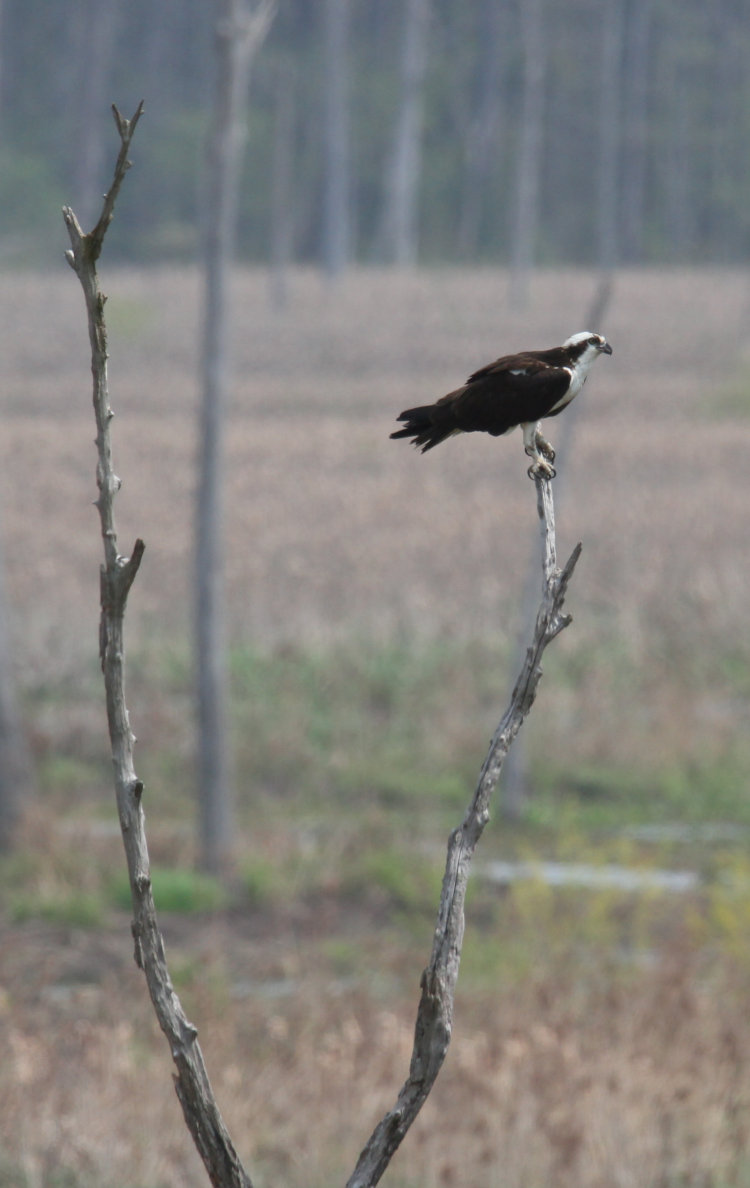
Not too far from the nest sat this lone osprey, Pandion haliaetus, and I have to make a quick observation here: I recently discovered that, properly, this is a Pandion haliaetus carolinensis, since it the subspecies on the American continents. There are also Eurasian (P. haliaetus haliaetus,) Caribbean (P. haliaetus ridgwayi,) and Australian (P. haliaetus cristatus) subspecies – how did I not know this before? But overall, when we’re talking about North America, nearly all sources simply use P. haliaetus and don’t distinguish the subspecies, so, fine. And this one was disinclined to do anything while I was there, not to mention the light was less than ideal, so I didn’t stay long, But I was specifically there to check on the nest, which looked like this:

I observed this for a short while and shot occasional frames, just in case some spare feathers peeked up from a low-crouching female, but nothing at all was evident. Still, the one sitting nearby seemed to indicate that the nest wasn’t being ignored, and off in the distance, another nest was clearly being used.
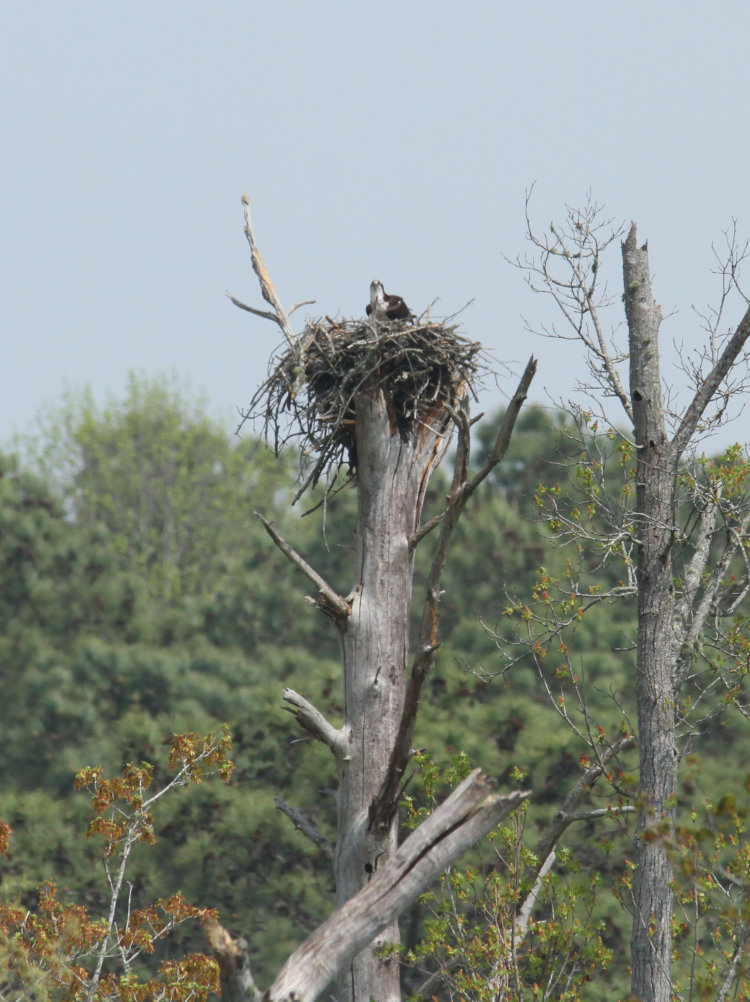
This one is too far away to make the trip down there worthwhile, but can serve as an incidental subject only if the first nest is occupied. Still, it helped confirm that my timing was correct, and nesting season had begun.
Now we jump ahead to a couple of days ago.
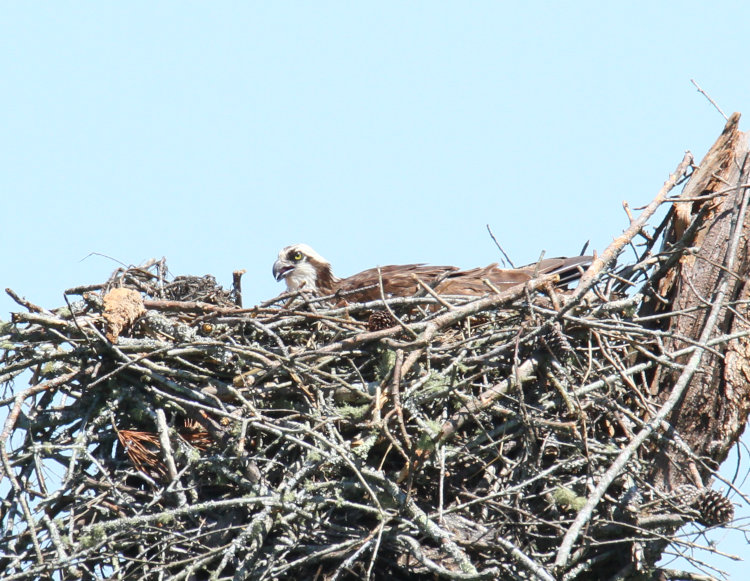
No mistake this time, and she appeared quite well settled in, either already on eggs or just about to lay them, which seems in line with the mating behavior seen earlier. Gestation period is 5-6 weeks, so I’m marking my calendar to be paying more visits in that time frame, though the best pics will come when the young are big enough to stand upright and peer over the edge of the nest.
I have to throw in the very first pic I got of her:

Look at that: eyes closed. It’s like school portrait day
Meanwhile, we had another sentry standing by, though in a different location this time.
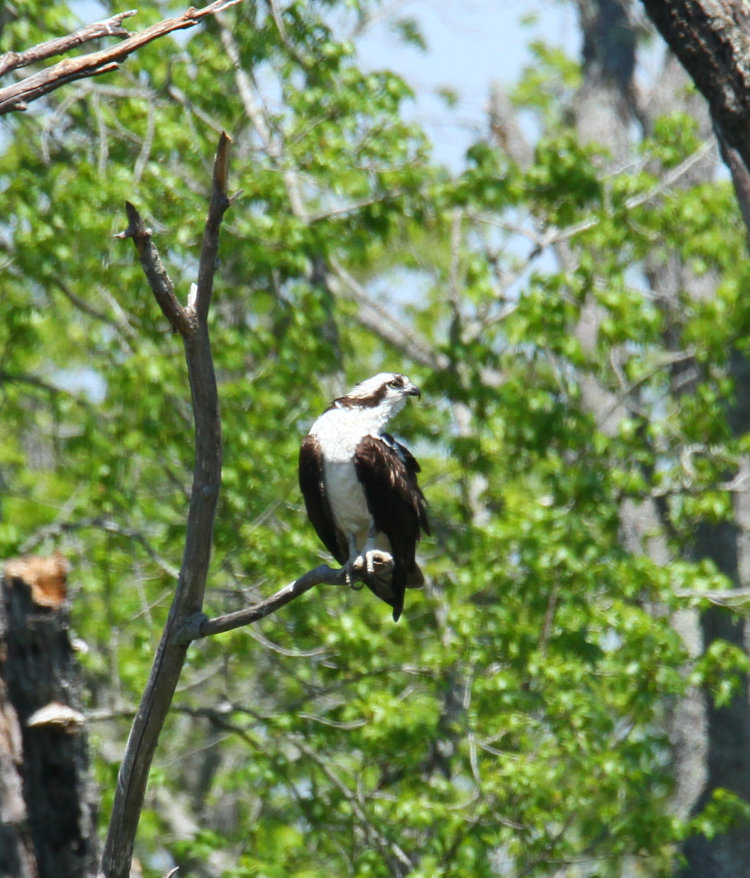
I’m going to assume this one is a male, though since he was roughly in between the two occupied nests, I’m not absolutely sure whose mate he was. And no, it’s quite unlikely that he’s mated to both, even though some species do this; come hatching, he’d be hard-pressed to keep two nests stocked with food simultaneously. And the more distant nest remained occupied:

She was exhibiting the same behavior, right down to something that we’ll come to in a moment. Before that, however, I thought I saw something in the greater distance and trained the lens on that:

I didn’t realize just how far away this tree was until I’d unloaded the card back home, thinking it was the nest of a much smaller bird, but that color pattern certainly looks like an osprey again, making this perhaps twice as far as suspected, far enough that atmospheric humidity was softening the image. You think I’m making excuses for soft focus, but this is a tight crop from a full frame that actually looks like this:
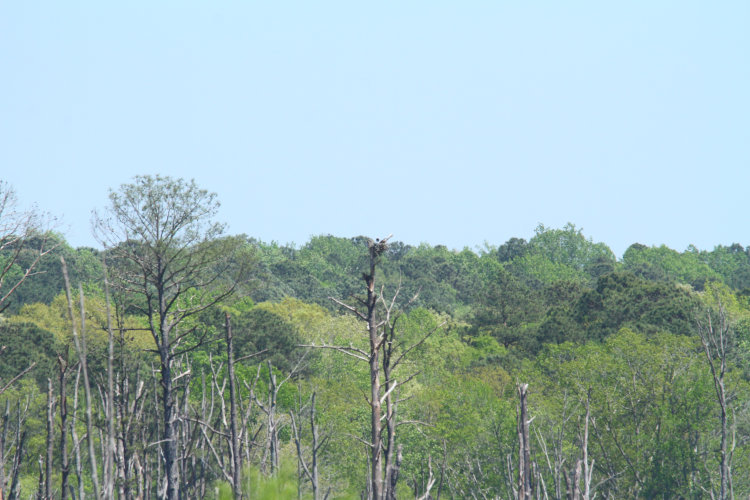
Once again, this is at 600mm, but I can do a little better job of illustrating the distance. Here is the moon (shot much earlier) also full frame at 600mm:
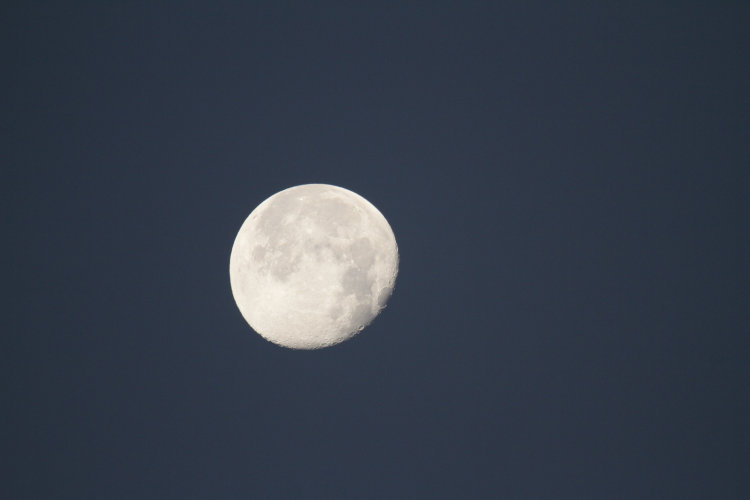
Once you realize that you can blot out the moon in the sky with your thumb, you’ll know that the distant nest was barely discernible at all – I would estimate the distance but I would be wrong.
But while we’re here, we’ll have a brief video clip taken at the time, when the closest nest occupant stood up to do some housekeeping.
No sooner had she completed her tasks and settled back down, than the second occupant stood up to do the same thing – just that time of day I guess. Again, totally unsure if eggs were actually present or not, but the day was more than warm enough for eggs to be able to stand a little exposure. I’ll endeavor to keep an eye on things and maintain progress posts as we go, but the real changes will be in roughly a month – I’ll try to have some content in the interim.




















































